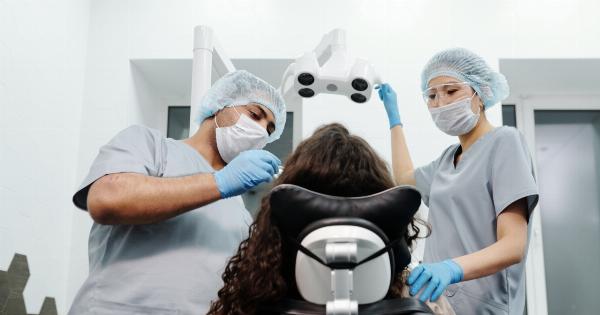Neurosurgery, a specialized branch of surgery that deals with the treatment of disorders and injuries related to the nervous system, requires constant innovation to ensure better patient outcomes and reduced surgical risks.
Modern advancements in technology and medical practices have revolutionized the field of neurosurgery, introducing new approaches that are insured and improving surgical techniques. In this article, we will explore the latest insured new approaches to neurosurgery, including minimally invasive techniques, robotic surgery, imaging advancements, and more.
Minimally Invasive Techniques
Traditional neurosurgical procedures often involve significant tissue trauma, resulting in prolonged hospital stays, increased risks of infection, and extended recovery periods.
However, minimally invasive techniques have emerged as a game-changer in the field, allowing for precise and less invasive surgical interventions for various neurosurgical conditions.
One such approach is endoscopic neurosurgery, which involves the use of specialized instruments and tiny cameras to visualize and perform surgeries through smaller incisions.
This technique reduces trauma to surrounding tissues, leading to faster recovery and reduced complications. Additionally, it offers enhanced visualization of anatomical structures, enabling surgeons to perform delicate procedures with greater accuracy.
Another innovative technique is stereotactic radiosurgery, a non-invasive procedure that delivers precise radiation to targeted areas of the brain or spine.
It is mainly used to treat brain tumors, arteriovenous malformations (AVMs), and functional disorders like trigeminal neuralgia. Stereotactic radiosurgery maximizes the destruction of abnormal tissues while minimizing damage to healthy surrounding structures.
Robotic Surgery
Advancements in robotics have paved the way for safer and more precise neurosurgical procedures. Robotic surgery involves the use of robotic arms controlled by surgeons, providing improved dexterity and precision during complex surgeries.
It allows for smaller incisions and more accurate manipulation, ultimately reducing the risk of complications and shortening recovery times.
In neurosurgery, robotic assistance is particularly beneficial in the removal of brain tumors, deep brain stimulation procedures, and spinal surgeries.
Robotic systems offer real-time imaging and navigation capabilities, ensuring precise targeting of lesions and minimizing damage to critical structures.
Imaging Advancements
Accurate preoperative planning and intraoperative visualization are crucial for successful neurosurgical outcomes.
Technological advancements in imaging techniques have significantly improved the diagnostic accuracy and surgical navigation for neurosurgeons.
Magnetic resonance imaging (MRI) has become an indispensable tool in neurosurgery. It provides detailed anatomical images, aiding in the identification and characterization of brain tumors, vascular malformations, and other intracranial pathology.
Moreover, functional MRI (fMRI) allows surgeons to map critical brain regions responsible for speech, movement, and other essential functions, increasing the safety and precision of tumor resections.
Additionally, intraoperative imaging techniques like intraoperative MRI and intraoperative computed tomography (CT) scans allow surgeons to make real-time modifications during the surgery.
These imaging modalities enable the assessment of tissue removal and the placement of implants, ensuring optimal outcomes.
Neuronavigation Systems
Neuronavigation systems play a vital role in guiding neurosurgeons during complex procedures. These systems merge preoperative imaging data with real-time patient anatomy to aid surgeons in accurate localization and navigation.
By integrating imaging information, neuronavigation systems help surgeons identify precise entry points and plan the safest trajectory for surgical instruments.
They enhance the accuracy of tumor biopsies, spinal fusions, and ventriculoperitoneal shunt placements.
Endovascular Neurosurgery
Endovascular neurosurgery refers to minimally invasive procedures performed within the blood vessels of the brain or spine.
It involves the use of thin catheters and wires to treat various neurovascular conditions, including aneurysms, arteriovenous malformations, and stroke.
With the advent of endovascular techniques, many neurosurgical interventions that previously required open surgeries can now be performed through small groin incisions.
Endovascular coiling of intracranial aneurysms, for example, eliminates the need for open craniotomy, leading to reduced surgical risks and faster recovery.
Neuromodulation
Neuromodulation techniques have revolutionized the management of chronic neurological conditions, offering hope to patients who have previously been unresponsive to traditional treatment approaches.
Deep brain stimulation (DBS) is one such neuromodulation technique that involves the implantation of electrodes into specific areas of the brain.
By delivering electrical impulses, DBS can effectively manage movement disorders like Parkinson’s disease and essential tremors. It improves motor function and reduces medication requirements, significantly improving patients’ quality of life.
Spinal cord stimulation is another neuromodulation technique used to manage chronic pain conditions. It involves the implantation of electrodes in the epidural space to deliver low-voltage electrical stimulation, alleviating chronic back and limb pain.
Tissue Engineering and Regenerative Medicine
Tissue engineering and regenerative medicine hold great promise for the future of neurosurgery. Researchers are exploring techniques to repair and regenerate damaged neural tissues, such as spinal cord injuries and brain trauma.
Bioengineered scaffolds and stem cell therapies are being investigated to promote nerve tissue regeneration and functional recovery.
These approaches aim to restore lost neurological function and potentially revolutionize the treatment of devastating conditions.
Conclusion
Thanks to ongoing advancements and insurance coverage, neurosurgery is continuously evolving, adopting new approaches that enhance patient outcomes and reduce surgical risks.
Minimally invasive techniques, robotic surgery, imaging advancements, and neuromodulation techniques have revolutionized the field of neurosurgery. These innovations improve surgical precision, reduce complications, and shorten recovery times, ultimately leading to better patient outcomes.
As technology continues to advance, the future of neurosurgery holds even more promising possibilities for improving the lives of patients with neurological disorders.

























